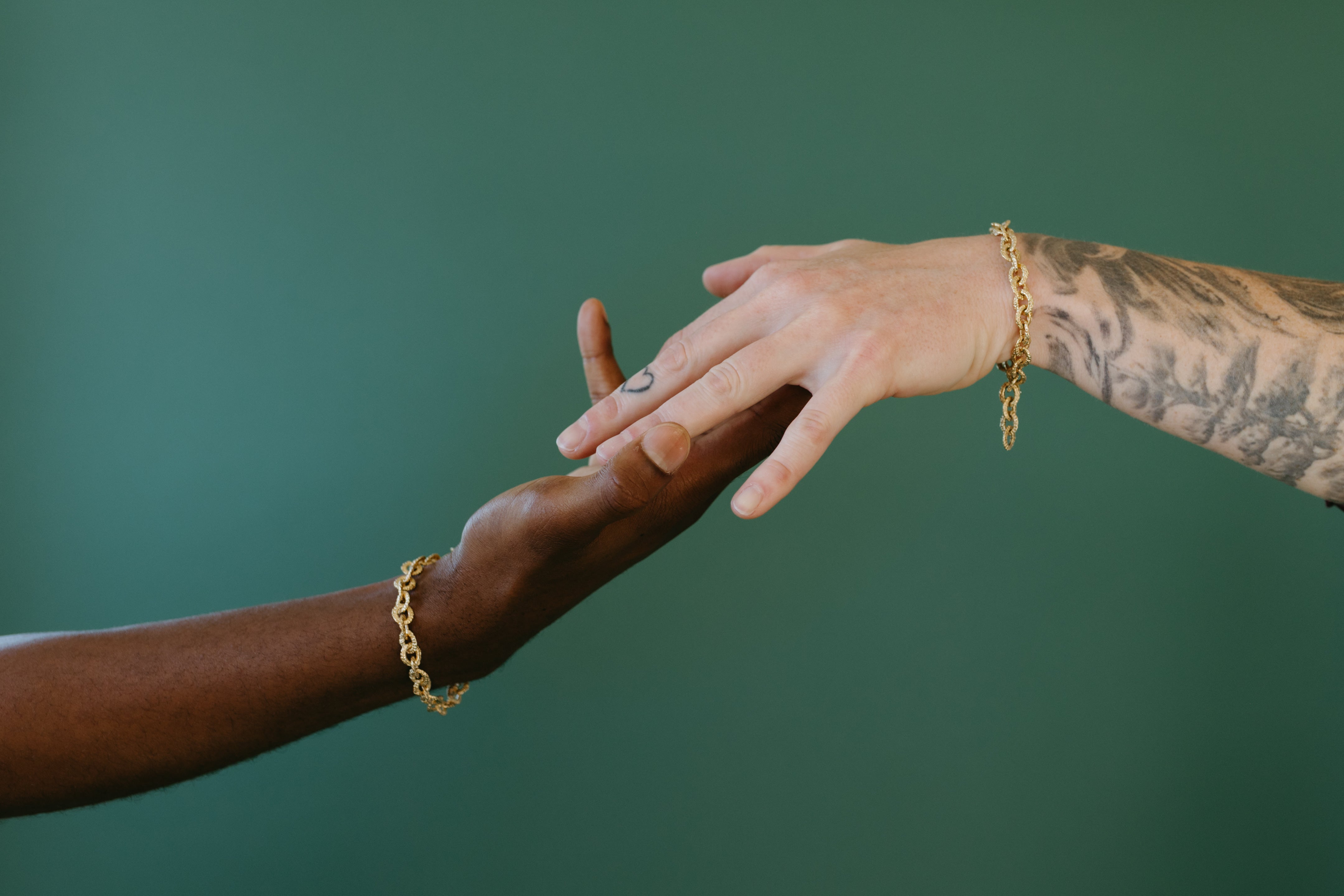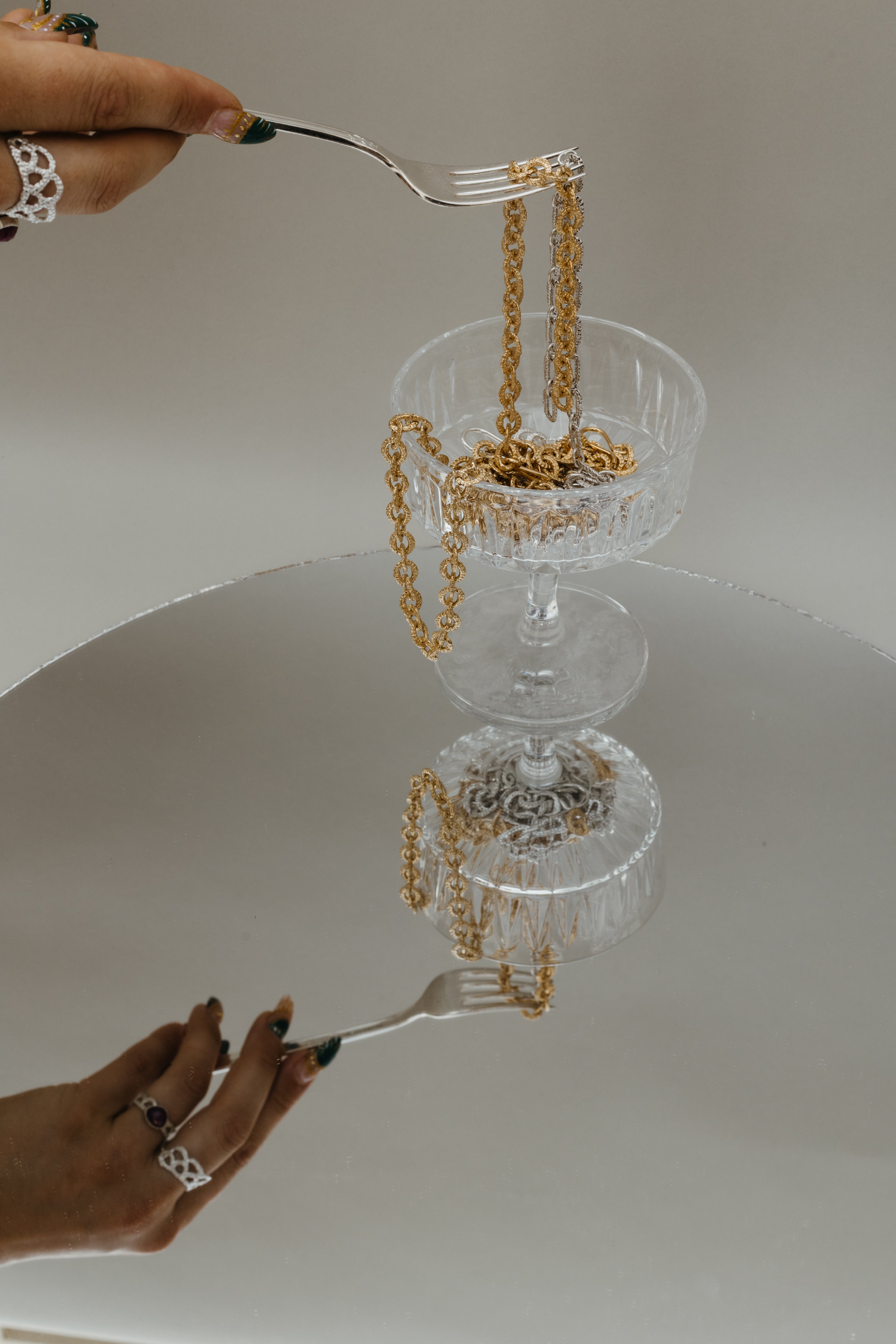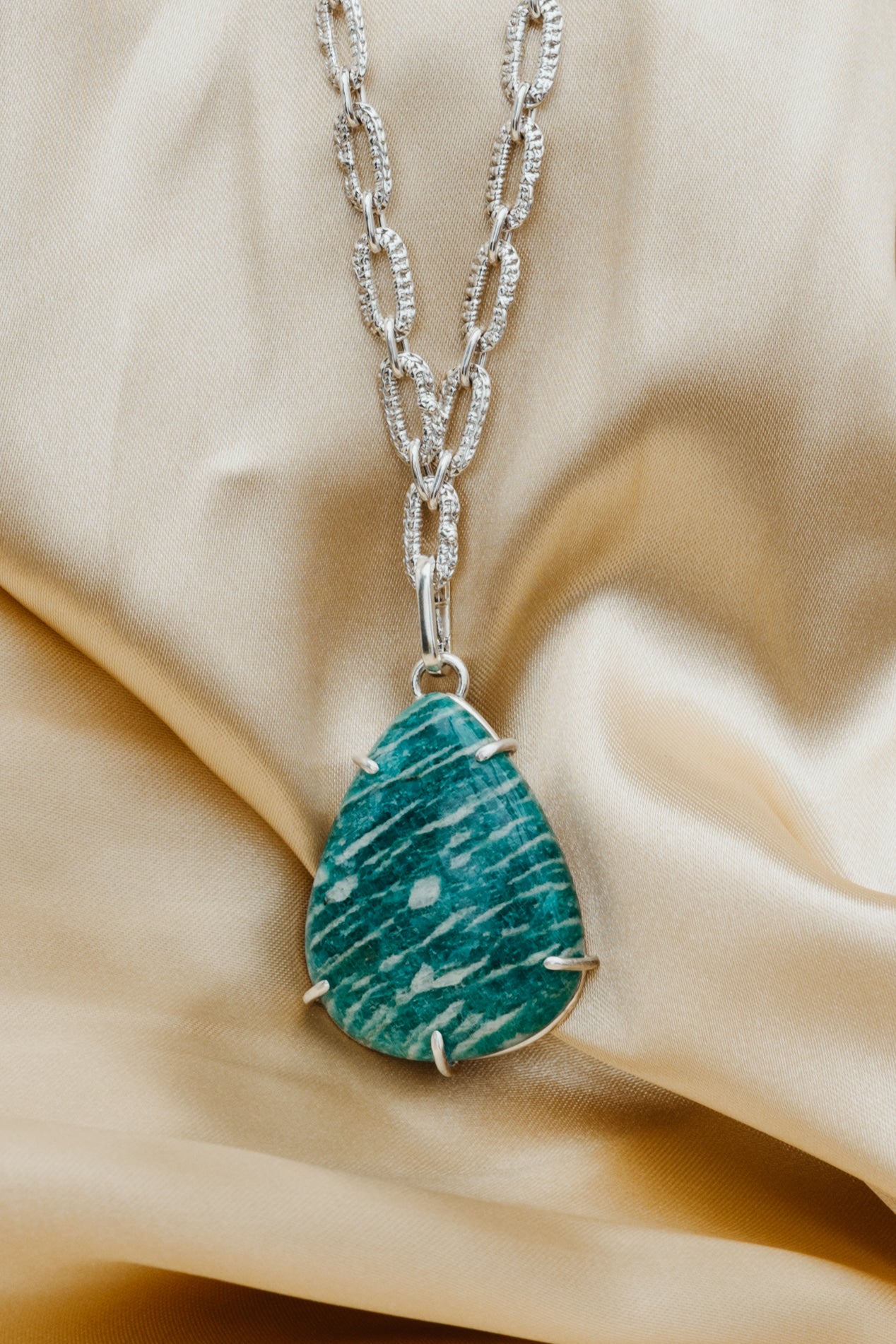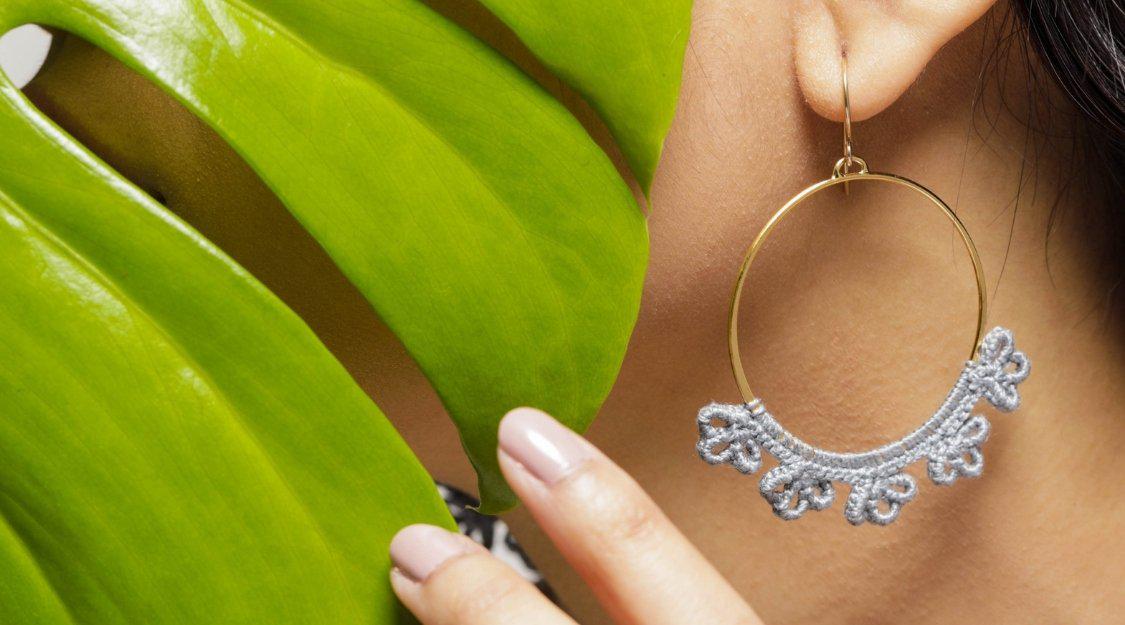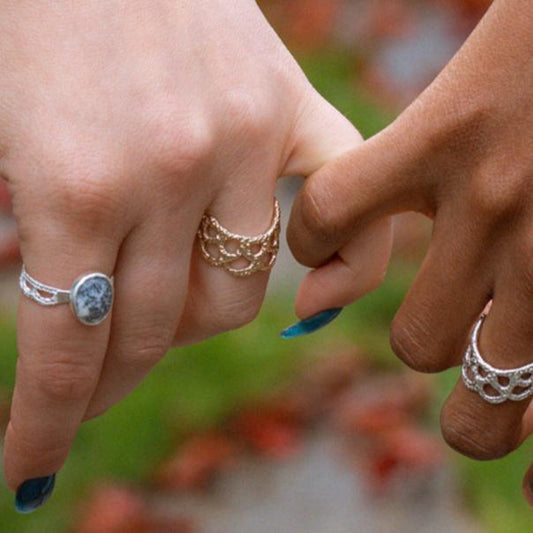
Tarnished jewelry, two words jewelry lovers cringe at the mere mention of. It’s something we always hear about and automatically think it’s a bad thing, but is it? To answer some of your questions around tarnishing I put together a guide that goes over just exactly what tarnish is, why tarnished jewelry happens, how you can prevent tarnish, and how you can clean your own tarnished jewelry safely.
What is jewelry tarnish, and why does it happen?
Jewelry tarnish is caused when the surface of the metal comes into contact with body oils, makeup, sulfur, sweat, perfumes, deodorants, lotions, and other external substances. Tarnish varies from looking slightly dull to totally black, depending on the metal and how you wear and care for your jewelry. Read on to learn which metals cause what reactions.
Which metals tarnish?
There are many metals that tarnish, but I’ll be focusing on the main two in my collection: nickel-free brass and sterling silver. I also use a lot of thickly plated 14kt gold which doesn't tarnish over time so read more below! All of the metal I use in my jewelry is high-quality and hypoallergenic, which means it’s safe for sensitive skin, including my nickel-free brass.
Brass:
All brass naturally tarnishes over time, which gives it that organic and unique look that we all love. What causes brass to tarnish is the copper within the metal. When copper comes into contact with your skin it’s very common for it to oxidize, and if you’re allergic to brass or have really sensitive skin the oxidation can sometimes turn your skin green. If that’s the case, I recommend wearing sterling silver or gold instead.
Sterling Silver:
Tarnished sterling silver is caused by a number of common and natural chemicals, like sulfur (found in air particles around cities/industrial areas), moisture (if you live in a more humid environment), chlorine (swimming in pools or spas), and your own skin’s acidity level (some people's skin PH is so high silver tarnishes almost instantly!). When it comes down to it, there are so many things in daily life that can cause your silver to tarnish and look dull or completely black. But good news! It’s very easy to manage and remove tarnish from silver, so read on to learn about my recommended cleaning techniques.
Gold:
All gold above 14 karat should not tarnish, and even if it does it is very, very little. For my gold-plated jewelry, I plate 14kt gold over nickel-free brass using a minimum of 80 millionths of gold for earrings and thicker coats for necklaces and rings. I do this to ensure your gold won’t rub off over time. These means you can wear it for years and years, perhaps even keeping it in your family as a special heirloom piece for generations to come.
How do I clean my tarnished jewelry?
I organized my cleaning tips by metal type because of the way tarnishing varies. When you clean your Twyla Dill jewelry be sure the cleaning methods are safe for the cotton lace. The lace I use is durable and hand-washable with a simple combination of soap and water. If you’re looking up DIY methods to clean your jewelry, I highly recommend finding a solution that is reputable and won’t ruin your jewelry. Here are my recommendations for how to get tarnish off jewelry:
Brass:
- Polishing cloth, which I include in each jewelry order I send out.
- Use soap and water for a gentle clean. First test it on a small spot on your jewelry to make sure it’s safe. Dry your jewelry really well after doing this so there’s no water left over on the metal. That would cause it to tarnish even more!
Sterling Silver:
- Polishing cloth, which I include in each jewelry order I send out.
- Wear it regularly! The natural oils on your skin can actually help keep your jewelry clean and maintain its brilliance.
- Chemical cleaners like Tarn-X or Wright's Silver Cream Polish can work, but be careful because these are chemicals and can be toxic if used incorrectly. Because my jewelry often has lace, it's easier to avoid these and use a polishing cloth.
Gold:
- Gold naturally remains polished, so there's no real need to spruce it up!
How do I store my jewelry so it doesn’t tarnish?
- Keep your jewelry dry. Try not to store it in humid places, like the bathroom.
- Separate your jewelry by metal and type. Try a stackable jewelry organizer or something like drawer compartments to keep your pieces organized and separate. Make sure to keep costume jewelry separate from semi-fine and fine jewelry to prevent tarnish.
- If you keep your jewelry out in the open, store it in a place with a consistent temperature. Designate a special place for your go-to pieces so that they are easy to see and grab in a hurry!
- Store delicate jewelry in a dark and dry location.
- When in doubt, keep your jewelry clean and dry.
I hope this helps you get a better feeling of what tarnishing is and how it's not the terrible thing that it's made out to be! It's completely natural for metals to tarnish, so it's easy to prevent and take care of. If you're still trying to figure out how to clean your jewelry, please don’t hesitate to reach out via the Contact Form.
Unique and one-of-a-kind jewelry handmade in Seattle, WA. Lovingly and sustainably created in small batches with nickel-free brass, sterling silver, 14kt gold, stones, and hand-crocheted lace. Redefining everyday jewelry so you can feel seen and empowered to live life on your own terms.


